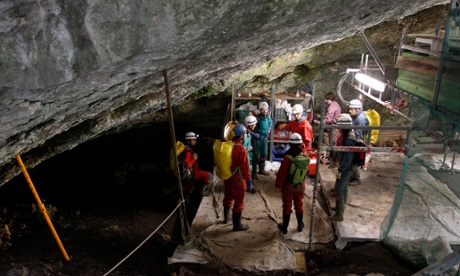Spanish investigators believe they may have found proof that neanderthal man reached Europe from Africa not just via the Middle East but by sailing, swimming or floating across the Strait of Gibraltar.
Prehistoric remains of hunter-gatherer communities found at a site known as La Cabililla de Benzú, in the Spanish north African enclave of Ceuta, are remarkably similar to those found in southern Spain, investigators said. Stone tools at the site correspond to the middle palaeolithic period, when neanderthal man emerged, and resemble those found across Spain.
"This could break the paradigm of most investigators, who have refused to believe in any contact in the palaeolithic era between southern Europe and northern Africa," investigator José Ramos explained in the University of Cadiz's research journal.
Although the scientists have not yet reached definite conclusions, they say the evidence that neanderthal man mastered some primitive techniques for crossing the sea into Europe from the coast near Ceuta looks promising.
If the theory could be proved, and a two-pronged arrival of neanderthal man accepted, it would help solve some of the mysteries thrown up by prehistoric sites around Europe.
During the ice ages that affected much of Europe, the distance from Africa across the Strait of Gibraltar would have been much less than its current eight miles, the investigators from Cadiz University said. There was also evidence that small islands may have existed in the middle of the strait, which would have made travelling from one side to the other much easier.
Fauna and flora evidence from the same era suggested both sides of the Mediterranean were by no means isolated. A neanderthal ability to travel across small stretches of sea would help explain why the Iberian peninsula has older examples of human remains than, say, France.
Mr Ramos said: "If the only way of getting to Europe was via the Middle East then, theoretically, they should have got to France before reaching Spain."
Investigators from Atapuerca, a Spanish site where some of the continent's oldest human remains have been found, will travel to Ceuta to help investigate.
Well-adapted to the cold climate of palaeolithic Europe and western Asia, neanderthals appear to have been the dominant hominid in the region until the emergence of anatomically modern humans. The first neanderthal skull was found in Gibraltar in 1848, although the species was not recognised until a second discovery in a German quarry in 1856.
Neanderthals are also thought to have had their last stand in southern Spain around 30,000 years ago before being wiped out by the spread of homo sapiens.







